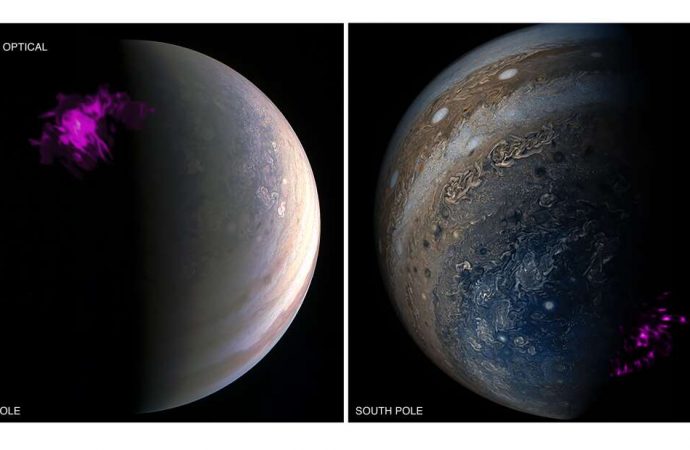Four decades since their discovery we finally understand what’s powering the spectacular X-ray auroras of Jupiter. These light shows are bright, brief, and happen regularly every few minutes. And yet, they release hundreds of gigawatts of power, enough to power our whole civilization for a few instants.
Source: IFL Science
Now, for the first time, astronomers have seen what happens to sparks these light shows. According to a new study published in Science Advances, the auroras are caused by the periodic vibration of Jupiter’s magnetic field lines. The vibrations alter the magnetic field creating waves of plasma around the giant planet. The ions in this plasma originate from the eruption of Jupiter’s volcanic moon Io and they are mostly sulfur and oxygen. The waves send this material crashing down on the Jovian atmosphere, releasing energy.
“We have seen Jupiter producing X-ray aurora for four decades, but we didn’t know how this happened. We only knew they were produced when ions crashed into the planet’s atmosphere,” co-lead author Dr William Dunn from UCL Mullard Space Science Laboratory said in a statement.
“Now we know these ions are transported by plasma waves – an explanation that has not been proposed before, even though a similar process produces Earth’s own aurora. It could, therefore, be a universal phenomenon, present across many different environments in space.”
To find this out they used data from NASA’s Juno mission, which studied Jupiter up close, measuring the changes in the magnetic field, and the European Space Agency’s XMM-Newton, which measured the emitted X-rays from the Earth’s orbit.Volume 0%
The waves are known as electromagnetic ion cyclotron (EMIC) waves, similar to those that power Earth’s aurorae although our own are a lot less energetic. This suggests that this might be a common phenomenon in the universe.
“Now we have identified this fundamental process, there is a wealth of possibilities for where it could be studied next. Similar processes likely occur around Saturn, Uranus, Neptune and probably exoplanets as well, with different kinds of charged particles ‘surfing’ the waves,” co-lead author Dr Zhonghua Yao, from the Chinese Academy of Sciences, added.
The study is based on observations across 26 hours between July 16 and 17, 2017. During this time Jupiter was producing bursts of X-rays every 27 minutes. It is unclear what is causing the magnetic field to vibrate. The solar wind could be a possible cause. Temperature differences might also play a role. The team suggests that other plasma effects could also play a role.
While a crucial mechanism has been discovered, the full picture of Jupiter’s incredible aurorae is yet to be obtained.
Source: IFL Science

































Leave a Comment
You must be logged in to post a comment.